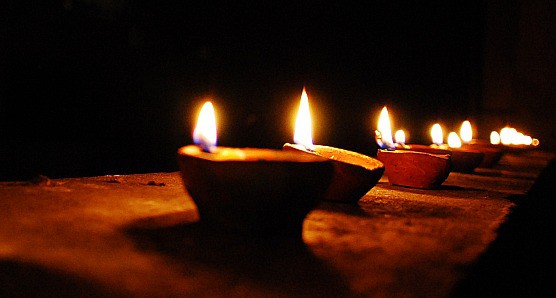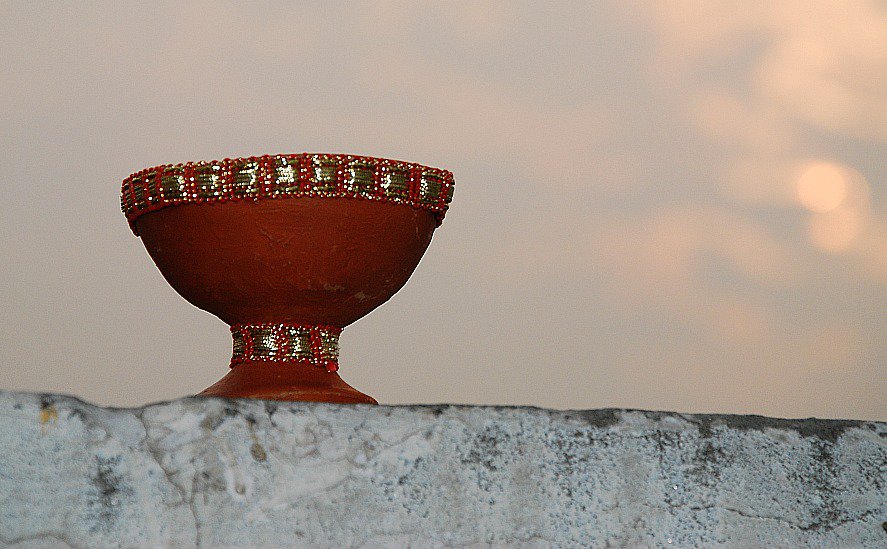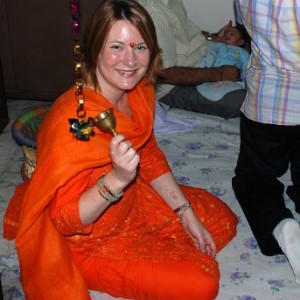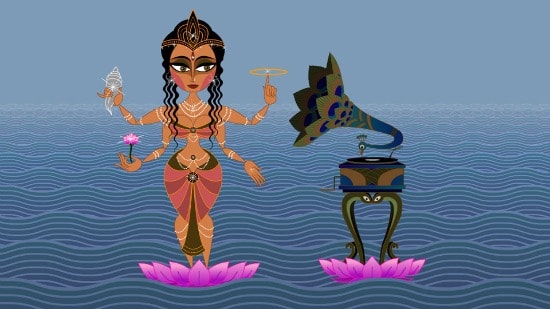 The meaning of Diwali
The meaning of Diwali
Diwali in India is like Christmas in Canada. It’s the biggest festival of the year, celebrated all over India, with lights, firecrackers, flowers, parties and pujas. Diwali (or Deepavali) celebrates the return of Lord Rama and Sita from exile, and the triumph of light over dark. This year, 2010, it takes place on November 5, on the new moon night, so the sky is absolutely dark — the better to see the firecrackers that people set off in an absolute frenzy. If you are Canadian, you can celebrate Diwali by entering a contest to win a trip to India.
The upcoming year, 2011, is the the Year of India in Canada, and the good folks at IndiaTourism are sponsoring a WIN A TRIP TO INDIA! contest, along with Absolute Tours and my friends at Indus Travels — who are my partners for my BreatheDreamGo trips to India. By the way, the tours are closing in mid-November 2010, so if you want to go to India with me this winter, act now by filling out a booking form.
 The meaning of Diwali
The meaning of Diwali
It is no coincidence that the festival of light is held at this time of year, when the days shorten and darken, leaving summer behind and ushering in winter. The profusion of diyas and firecrackers lighting up houses and the night sky remind people to keep the light within themselves alive, and not let the dark days overpower them.
I have been in India only once for Diwali, and it was a very special experience. I helped Ajay’s Mom and niece buy murtis (statues of the gods), flowers, diyas and gifts; and I helped decorate the prayer room with garlands of marigold flowers and the house with hundreds of tiny diyas. Diyas are small earthenware lamps filled with oil and a cotton wick. In the evening, the family held a puja in the prayer room — it was my favourite event. Afterward, we went outside onto the big marble terrace to shoot our store of firecrackers up into the sky over Delhi. It was crazy. Millions of people lighting off all kinds of noisy fireworks for hours and hours, lighting up the dark night — and creating a toxic haze! (The air pollution was appalling! Ajay and I drove to a party on Diwali night and could barely see the road in front of us for the thick smog. Luckily there were very few cars on the road, but we did come across a car traveling on a major one-way road — the wrong way!)
Diwali is based on the story of Rama and Sita. The Ramayana is one of two major epics that form a cultural foundation in India (the other is the Mahabharat, the story of the war between the Pandavas and the Kauravas. The Bhagavad Gita comes from this epic.) It’s hard to over-estimate the importance the Ramayana has had on the development of Indian culture and society, including into the present. One of the most contentious political issues, domestically, in India over the past few years has been the fight for control over the site of Rama’s birthplace in Ayodhya. It is a complicated issue about which religion, or religious sect, has title to the land, and has caused riots, the destruction of a mosque in 1992 and a lengthy court cases that was settled in September 2010.
Also, people still consider Rama to be the ideal man, embodying all the values and virtues that Indian society cherishes. He is considered one of the supreme gods in India, especially in Delhi. Each of the major Indian cities has a presiding deity — Kali for Kolkata, Ganesh for Mumbai — and for Delhi, it’s Lord Rama. Sita is also considered an ideal woman, for her faithfulness and loyalty to her husband. Personally, I admire her for her courage to undergo a trial by fire. The strength of women is generally vastly underrated, if you ask me, but especially so in India. I find Indian women to be power-houses. They’re beautiful and strong and I admire them greatly.
For a modern, American retelling of the Ramayana, watch the feature-length animated cartoon Sita Sings the Blues by Nina Paley. Inspired by the music of American blues singer Annette Hanshaw, she overlays her own story of separation and divorce onto the story of Rama and Sita, and lavishly animates it. Unless you are an absolute purist who demands that traditional stories be told in a traditional way, you will love it.

Mariellen Ward is a freelance travel writer whose personal style is informed by a background in journalism, a dedication to yoga and a passion for sharing the beauty of India’s culture and wisdom with the world. She has traveled for about a year altogether in India and publishes an India travel blog, Breathedreamgo.com. Mariellen also writes for magazines and newspapers.










